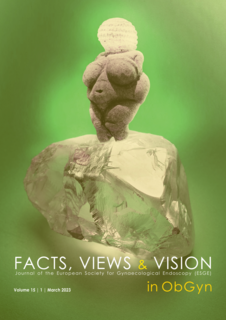Excisional endometriosis surgery with hysterectomy and bilateral salpingo-oophorectomy versus excisional endometriosis surgery alone for pelvic pain associated with deep endometriosis
Endometriosis, rectovaginal endometriosis, excisional surgery, hysterectomy, pelvic pain
Published online: Mar 30 2023
Abstract
Background: There is no agreed consensus on the optimal surgical treatment for pain associated with endometriosis.
Objectives: To compare improvement in symptoms and quality-of-life in patients undergoing excisional endometriosis surgery (EES) versus EES with hysterectomy and bilateral salpingo-oophorectomy (EES-HBSO).
Methods: This study evaluated patients undergoing EES and EES-HBSO at a single endometriosis centre between 2009 and 2019. Data was obtained from the British Society for Gynaecological Endoscopy database. Adenomyosis was assessed by blinded re-analysis of imaging and/or histology data.
Main outcome measures: Pain scores (numeric rating scale 0-10) and quality-of-life scores (EQ-VAS) before and after EES and EES-HBSO.
Results: We included 120 patients undergoing EES and 100 patients undergoing EES-HBSO. After controlling for baseline characteristics and the presence of adenomyosis, there was greater post-op improvement in non-cyclical pelvic pain amongst patients undergoing EES-HBSO compared to EES alone.The baseline pain scores had improved in the EES-HBSO cohort by 2.106/10 at 6 months (95%CI 0.469-3.742, p=0.012), 2.642/10 at 12 months (95%CI 0.871-4.413, p=0.004), and 2.548/10 at 24 months (95%CI 0.681-4.414, p=0.008), when compared to the EES group. Greater improvement amongst EES-HBSO patients was also seen for dyspareunia, non-cyclical dyschaezia and bladder pain. Patients undergoing EES-HBSO had greater improvement in EQ-VAS, although this was no longer statistically significant after controlling for adenomyosis.
Conclusion: EES-HBSO appears to provide greater benefit than EES alone for symptoms including non-cyclical pelvic pain as well as for quality-of-life. Further research is required to determine which patients benefit the most from EES-HBSO, and whether removal of the ovaries, uterus or both is the key to this additional benefit in symptom control.



